Re: Africa Wild Flower Book - Order Gentianales
Posted: Mon May 12, 2014 3:32 pm
Dwarf Chironia Chironia purpurascens
Order: Gentianales. Family: Gentianaceae
 © mposthumus
© mposthumus
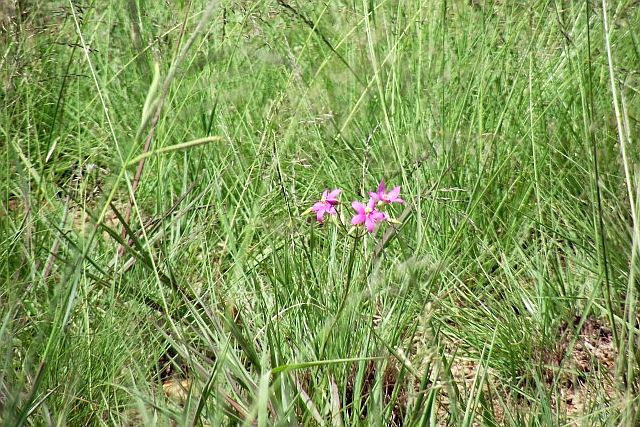 © mposthumus
© mposthumus
Rietvlei Nature Reserve, Gauteng
Description
Erect biennial or perennial herb up to c. 50 cm tall, with a slender rhizome. Stem slender, 4-ridged, mostly unbranched. Leaves at the base more or less in a rosette, linear-lanceolate, up to 7 × 1 cm, usually no longer present at flowering time; leaves along the stem opposite, oblong-elliptic, up to 6 × 1 cm. Flowers in a lax terminal cyme, bright pink, pink-mauve or rarely white, c. 2 cm in diameter. Fruit an oblong-ovoid capsule, up to 7 × 3.5 mm.
Chironia purpurascens purpurascens is 50–80 cm tall and the corolla is usually deep magenta-pink, it has the pedicels of the central flower in each cyme 6–25 mm long, or longer, whereas Chironia purpurascens humilis is smaller (up to 50 cm tall) and has the central flower of each cyme sessile or with a pedicel up to 6 mm long.
Distribution
Chironia purpurascens humilis is found in Mozambique, Zimbabwe, South Africa (Free State, Gauteng, KwaZulu-Natal, Limpopo, Mpumalanga, North West).
Chironia purpurascens purpurascens occurs in KwaZulu-Natal, Eastern Cape and Swaziland.
Habitat
In damp grassy areas and vlei margins, forming colonies in suitable habitats.
Order: Gentianales. Family: Gentianaceae
 © mposthumus
© mposthumus © mposthumus
© mposthumusRietvlei Nature Reserve, Gauteng
Description
Erect biennial or perennial herb up to c. 50 cm tall, with a slender rhizome. Stem slender, 4-ridged, mostly unbranched. Leaves at the base more or less in a rosette, linear-lanceolate, up to 7 × 1 cm, usually no longer present at flowering time; leaves along the stem opposite, oblong-elliptic, up to 6 × 1 cm. Flowers in a lax terminal cyme, bright pink, pink-mauve or rarely white, c. 2 cm in diameter. Fruit an oblong-ovoid capsule, up to 7 × 3.5 mm.
Chironia purpurascens purpurascens is 50–80 cm tall and the corolla is usually deep magenta-pink, it has the pedicels of the central flower in each cyme 6–25 mm long, or longer, whereas Chironia purpurascens humilis is smaller (up to 50 cm tall) and has the central flower of each cyme sessile or with a pedicel up to 6 mm long.
Distribution
Chironia purpurascens humilis is found in Mozambique, Zimbabwe, South Africa (Free State, Gauteng, KwaZulu-Natal, Limpopo, Mpumalanga, North West).
Chironia purpurascens purpurascens occurs in KwaZulu-Natal, Eastern Cape and Swaziland.
Habitat
In damp grassy areas and vlei margins, forming colonies in suitable habitats.
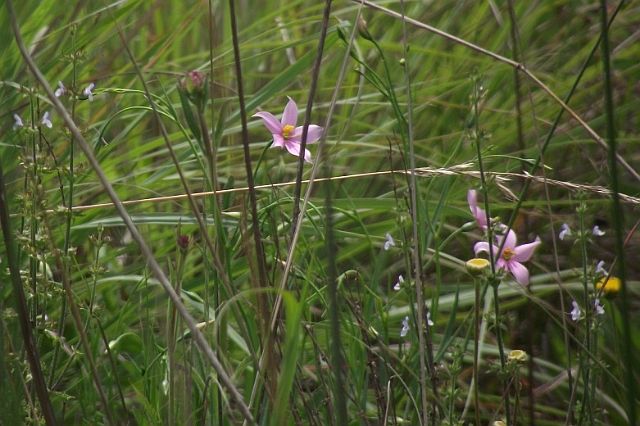 © mposthumus
© mposthumus © mposthumus
© mposthumus © Toko
© Toko © arks
© arks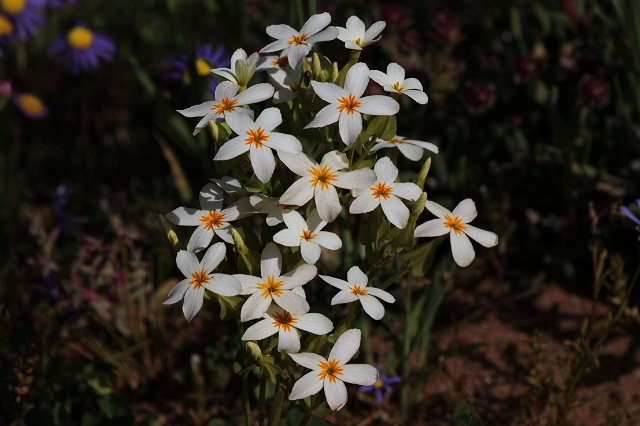 © Tina
© Tina © Pumbaa
© Pumbaa © arks
© arks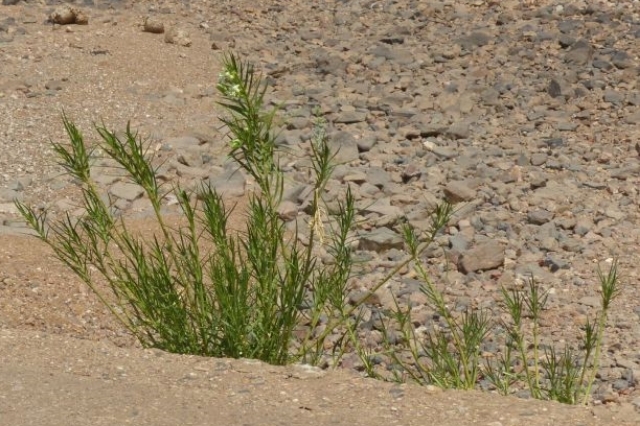 © arks
© arks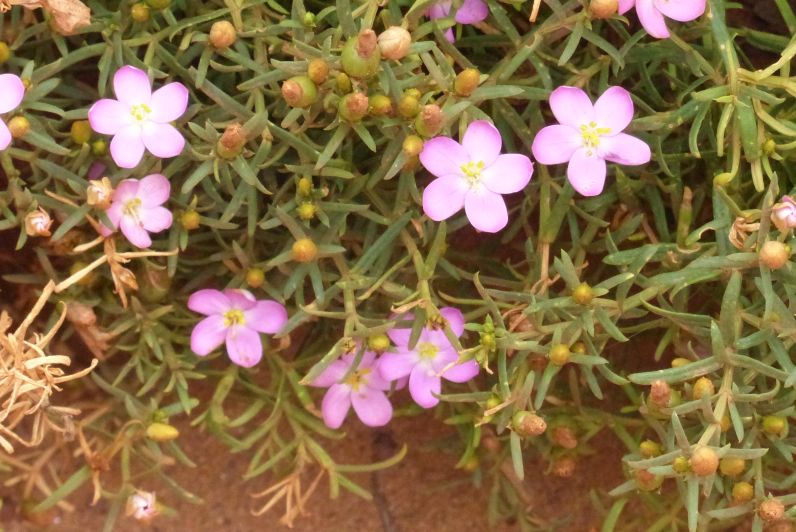 © arks
© arks